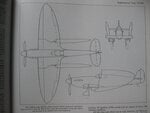Of course the Martlet was the better aircraft for RN carrier ops over the Hurricane because the former has folding wings. The latter was thus unable to operate from all three Illustrious class or Hermes. Only the wider forward lift on HMS Ark Royal (had she survived long enough) and Indomitable could accommodate the Sea Hurricane, at a 45' angle. All three Outrageous class, both Implacables, Eagle and Argus could also fit the Sea Hurricane.
But for ruggedness, I'd argue the Sea Hurricane has the Wildcat matched. Looking at vids of the Sea Hurricane, my impression was it was also sufficiently rugged for carrier ops. Of course they're both better than the Seafire.
Hawker Sea Hurricane carrier take off and landings
Ark Royal had small (22x45ft) lifts. Of the newer fleet carriers, only Indomitable and the two Implacable class had larger lifts. Victorious used Sea Hurricanes during Pedestal via a permanent deck park.
Hawker had a folding wing design prepared for the Sea Hurricane.

